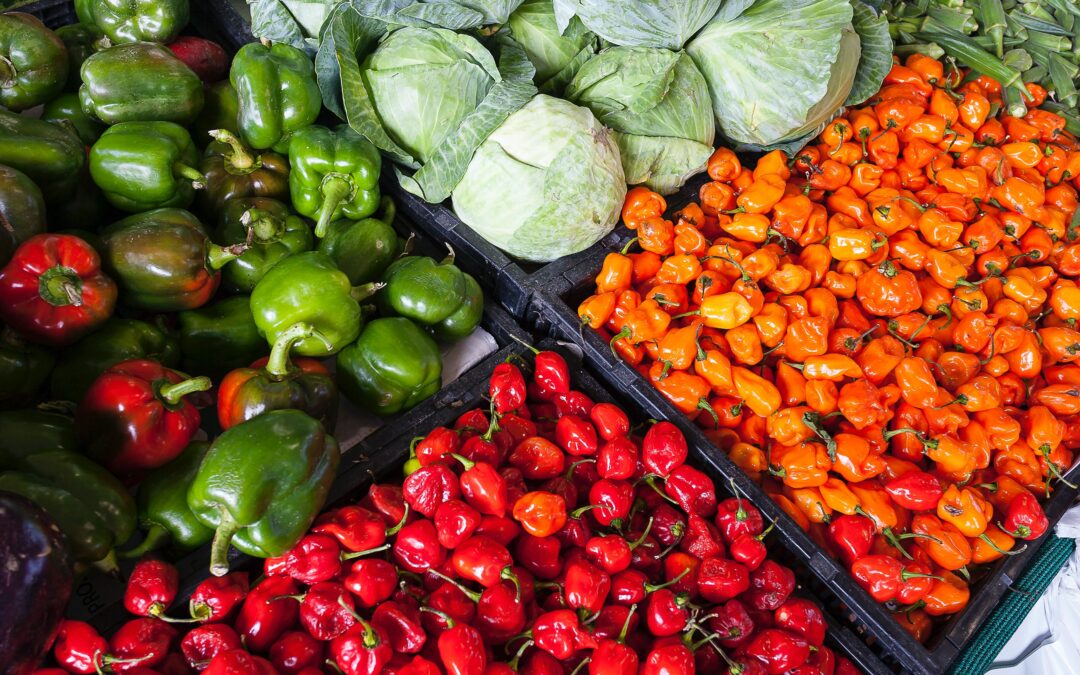I was cleaning my fridge the other day, as one does every now and then. We buy a lot of fruit and vegetables, sometimes I put lunch leftovers in there, and it can get messy fast.
It was messy this time as well. I usually put my trash bin by the fridge, I know I’ll be throwing out stuff, as much as I hate it, it’s inevitable. The process goes something like this, pick up something from the fridge, check the condition and decide, either put it back in, either use it ASAP for lunch/dinner/snack today or throw it in the trash. And as much time to inspect everything I took, the trash bin kept getting fuller and fuller.
Cherries that we bought a few days ago, got a bit carried away and bought 1,5 kg, about a half kilo went bad. Zucchini I planned to use for a lunch but simply forgot about them, to the trash. A banana that was iffy even when I bought them, now has no life in it, maybe I could use for something? Back in the fridge (hope I won’t find it in there next week).
Picked up a cream cheese container, got excited cause I could use it for lunch that day, opened it, was greeted by a new civilisation ☹
And, so on, you get the picture.
We throw away a lot of food, that is a fact, and the situation is alarming both in our homes and in the hospitality sector. According to the Croatian statistics Croatian households generate slightly more than 216,000 tons of food waste each year, or 53.6 kg per inhabitant, accounting for about half of the total food waste (the other half is generated in the hospitality and retail sector). The edible portion, or food whose waste could have been prevented, accounts for 86.7 tons, or 22 kilograms per inhabitant.
But why is it so difficult to pay more attention to what we’re buying and what we end up throwing away? Maybe we just can’t keep track of that aspect of our lives with everything that’s going on? Maybe we don’t really understand the impact of our actions (a couple of cherries is not a big deal anyway)? Maybe we need a monitoring system? Like when you monitor your expenses with mobile and net banking applications.
This was the idea behind the Food Waste Analyzer that is being developed as a part of the Rijeka Fusilli Living Lab.
We thought that if people had a visual representation of the food they buy, use, and throw away it would have a stronger impact on food waste awareness. Likewise, we thought that if restaurant owners had this kind of a monitoring systems they could analyse their needs better, adjust their procurement and in the end save money and create less waste.
The app basically works as a input/output monitor. Each user has the options to input groceries that they buy, the category of food and the specific type. For example, after doing grocery shopping on a Saturday, user can make an “inventory” of everything they bought.

This information is now in the inventory and is accessible in every moment. After preparing a meal, for example if decide to make banana pancakes, the user will record that they used up 2 eggs, half a litre of milk, half a kilo of bananas. Besides this info the user will also input the percentage of the food actually used. Meaning, if they made 10 banana pancakes, ate seven pieces, and threw away the rest they will record that 70% of the groceries was used.
This process allows the user to monitor their daily food waste generation, to keep track of things they already have “in stock” (but might have forgotten about) to avoid food going bad, avoid over purchasing and overspending. And there is one more benefit of this app – users will be able to compare their waste numbers. They will see the quantity of meat they throw, how much fruits goes to waste and what happens to dairy products after the expiry date. We will not only try to affect our user’s behaviour while shopping, but will also provide usefull information about our habits, what we buy, eat, and what we throw away. Hopefully, Food Waste Analyzer and it’s results will trigger scientists and researchers to dig deeper in this topic, entrepreneurs to develop new ideas and products and finally – our citizens to possibly change their habits and modify their behaviour.
In time the plan is to develop the app further, allowing the input of prices so that the financial aspect is clearly monitored and recommendations from the app: for example, monitoring expiry dates on different foods and sending alerts, creating shopping lists, recipe recommendations etc. the prospect of integrating the app to available API that is relevant is also considered.
Hopefully our “live audience” testing period for the rest of 2023 will give us more input on what functionalities would be interesting and which are maybe an issue for potential users especially from the hospitality sector.
Would you use such a food monitoring app for your own home?
